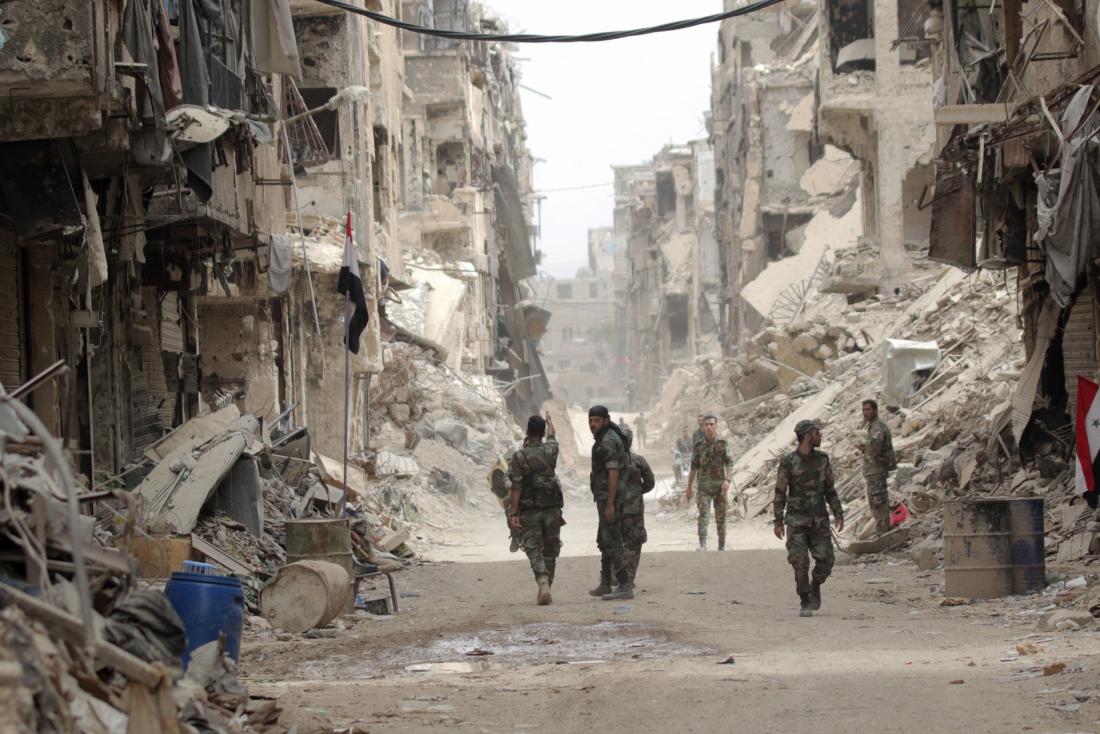No End in Sight to the Syrian Conflict

Bashar al-Assad has gained substantial territory in the Syria war. As the Syrian dictator becomes stronger and stronger – at least in the military sense – his treatment of civilians and opponents worsens in the same proportion. The regime offensive to regain control of the southwest provinces of the country, including Daraa, Quneitra and As Suwaida governorates (the so-called Southern Front), is producing another humanitarian tragedy, with hundreds of dead already.
By Gabriel Huland
The Syrian army offensive, backed by Russian aircraft and artillery, combines airstrikes and ground attacks. Almost 200,000 people, mainly civilians, have fled their hometowns and are stranded along the Israeli and Jordanian borders. Both countries, however, have closed their borders to the refugees. The Syrian government hoisted its flag in the centre of Deraa, the birthplace of the revolution that started in March 2011. For many activists and political analysts this act symbolised the end of the uprising against the regime of Bashar al-Assad.
Two main areas recently retaken by troops loyal to Al-Assad are Aleppo (December 2016) and Eastern Ghouta (March 2018). There, like in the southwest provinces being currently attacked, rebel forces have struck deals with Russia and with the Syrian regime according to which fighters and civilians were displaced to the North-eastern province of Idleb. The areas controlled by opposition forces are shrinking rapidly, showing a trend that will not be reversed easily.
In consonance with this momentum, Assad, the greatest war criminal of the twenty-first century, announced his next objective: the recapturing of Idleb. This Syrian province is inhabited by approximately 2 million people, half of which are displaced refugees coming from other parts of the country.
Several NGO’s have warned that a military offensive in Idleb could result in another humanitarian tragedy. This is due to its size (it is much bigger than Aleppo and Ghouta), to the complete lack of infrastructure (it is already under severe humanitarian pressure) and to the number of people living there. So, any military operation in the area would be much more complex and would most probably produce a huge number of deaths and injuries.
To worsen the situation, the Turkish and Iraqi borders are much more unstable than the Jordanian and Israeli ones, owing to the number of armed groups still active in the area. According to Enab Baladi, an independent Syrian news outlet, the Syrian government plans to launch the Idleb offensive very soon.
In that case, doubts emerge about what would be the attitude of the Kurdish militias, the Turkish army and the American troops stationed in the north of Syria.
Trump and Putin agree on …. defending Israel
The meeting between Putin and Trump was broadly covered by the international media. Apparently, a wide range of issues were discussed between the two leaders. The Syrian conflict was one of them, but no substantive deal was reached, at least not any that could mean a solution to the conflict. Assad is advancing and reconquering territory, but no peace is in sight.
Both leaders emphasized that their militaries are collaborating. They also mentioned that their main concern is securing the Israeli border. Thus, the only possible deal would concern the role of Iran in Syria. As for Israel, such an agreement has to clearly state that Iran will remain far away from the Israeli border. Israel is not worried if Assad remains in power and its authorities have said it loud and clear on various occasions.
The meeting reflected that the stalemate in Syria remains. It also showed that neither the U.S. nor Russia play any progressive role in this terrible conflict. Both follow their own economic and geopolitical interests. Moreover, contrary to what some political groups and commentators insist on arguing, the two countries have less opposing interests than it initially seems.




